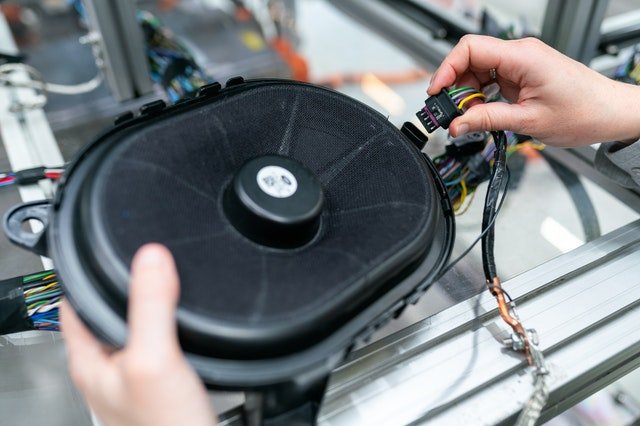Buying speaker wire seems like the less entertaining part of the entire process. The fun components are the amplifier and the speakers after all, right? So, why not just buy the first speaker wire you come across and get on with it.
Well, the truth is, the choice of speaker wire will determine the quality of sound you receive from your audio system.
What Is Speaker Wire in the First Place
Speaker wire, or speaker cable as it is sometimes referred to, is the wiring connection between a set of speakers and an amplifier. The amplifier sends an audio signal through the speaker wire to the speaker, as well as an electric current which powers the speaker drivers to produce sound.
The majority of speakers are not sold along with speaker wires. Therefore, selecting the right thickness (gauge) and type of wires for the speaker system is up to you. Picking your wires for the speakers may sound a bit intimidating to some and a little confusing for others.
Whichever group you fall onto, there’s little to worry about. Choosing speaker wires isn’t necessarily general knowledge, but it’s also very easy to grasp.
In this article, we’ll take you step by step and guide you to choosing the right speaker wires for your audio setup.
Determine the Gauge Size you Need
Gauge size refers to the thickness of the speaker wires and is identified by its AWG (American Wire Gauge) number. The lower the number is, the thicker the wire should be. Thicker wire will present less resistance to current flow.
Thick wire, 12 or 14 gauge, is recommended for long wire runs, low-impedance speakers (4 or 6 ohms), and high-power applications. A 16 gauge wire is great for relatively short runs, i.e. less than 50 feet and 8-ohm speakers. The wire gauge is cost-effective and pretty easy to work with.
Do not hesitate to request a recommendation for a suitable gauge during your purchase.
Determine The Length of The Speaker Wires You Need
To determine how long the speaker wire should be, run a string (literally any string
it’s just a prop) from your receiver to every single location of the speaker. Measure the string, then add just a few extra inches that you might need to work with.
The extra inches will allow you an easier time when making the connections.
Choosing the Type of Wire You Need
To start with, you can either purchase a speaker wire that has wire connections or one that doesn’t. If you buy wires that don’t come with connectors, we recommend buying banana connectors because attaching bare wire ends to your home theater receiver can be quite a headache.
If you plan on running your speaker wires inside your ceiling or walls, you’ll require a UL-rated wire, either labeled CL2 or CL3. If you plan to install an outdoor speaker wire underground, the wire you need should be rated for direct burial.
An in-wall speaker wire may come with two or four conductors. When using a 4-conductor wire, you can pull one cable over the longest distance from your receiver or amplifier to any in-wall volume control in a different room.
Next, run 2-conductor cables from the in-wall volume control to every single stereo speaker in the location. A four-conductor cable is also great for connecting your stereo-input speakers.
Upgrade Your Entertainment With the Right Speaker Wires
If you’re wondering whether you really need to use wires designed for use on speakers, the truth is no, you don’t have to. But if you really value the sound of your home entertainment system, you might find several benefits in buying proper speaker cables.
For instance, speaker wires are clearly marked, making it easy to connect the speakers and amplifier. They are also resilient, flexible, and have limited to zero interference from other electric signals.
Once you have gone through the steps listed in this column, you are sure to land on the right wires.
When connecting, locate the negative and positive ends of the speaker wires. Ensure that you have connected them accordingly to the amplifier or receiver and speaker. If audio still doesn’t sound right, then you might have gotten one or more of the connections crossed.



